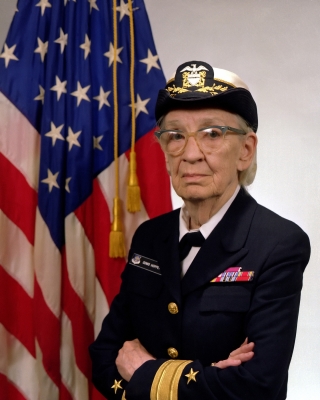
Grace Murray Hopper was an American computer scientist and United States Navy rear admiral, who created a computer programming technology that paved the way for modern data processing. A mathematical genius, she helped device UNIVAC 1, the first commercial electronic computer, and naval applications for COBOL
Grace Murray Hopper was born in 1906 in New York. Hopper went to Yale University to earn her Masters. Hopper began teaching mathematics at Vassar College in 1931 and received her Ph.D from Yale in 1934.
In 1943, Hopper quit teaching and joined the Navy WAVES (Women Accepted for Voluntary Emergency Service). She was assigned to the Bureau of Ships Computation Project at Harvard University as a lieutenant. She served on the Mark I programming staff headed by Howard H. Aiken. Mark I was the first large-scale automatic calculator and a precursor to electronic computers.
In 1946, Hopper wrote a manual of operations for the automatic sequence-controlled calculator, which described how to operate Mark I. It was the first extensive guidance of how to program a computer. Hopper continued her programming work with the Mark II and Mark III computers.
She is credited with coining the word “bug” to describe an unusual computer failure.
In 1949, Hopper joined the Eckert-Mauchly Computer Corporation (later the Sperry Corporation), where she worked on the UNIVAC I. In 1952, Hopper created the first compiler for modern computers, a program that translates instructions written by a programmer into codes that can be read by a computer. Hopper went on to develop the FLOW-MATIC computer programming language in 1957 and shortly after, pioneered the Common Business Oriented Language (COBOL). Hopper retired from the U.S. Navy Reserve in 1986 and was then hired as a senior consultant to Digital Equipment Corporation, a position she retained until her death in 1992, at age 86. She received many awards for her contribution to computer programming and technology, including the U.S. National Medal of Technology (1991).
Picture Credit : Google




